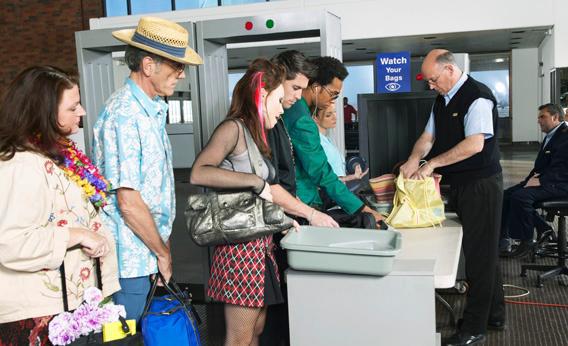An Air Canada passenger found a sewing needle in a catered sandwich during a flight on Monday. It’s the seventh needle found in an airplane sandwich in three weeks; Delta suffered a rash of similar incidents in July. What sort of security screening does food go through before being sold on planes?
Mainly spot checks. Sky caterers must obtain and periodically renew TSA certification, but the agency has declined to describe in any detail what certification entails. According to airline security analysts, however, caterers inspect a random sample of the foods rolling off the assembly lines for foreign objects, weapons, and explosives. It’s an imperfect process, but it would be prohibitively expensive to hand-check or X-ray each of the hundreds of millions of chicken cutlets and cheese omelets that sky caterers deliver each year. The manufacturers won’t say what proportion of products is checked, and it’s not clear that sky catering supervisors would be able to spot every security threat even if they checked a tainted food item. Terrorist groups have allegedly developed, for example, a patty-shaped plastic explosive that could be difficult to recognize in a fully dressed burger.
In addition to the food spot checks, caterers are supposed to subject their sky chefs to criminal background checks. The screening procedure has its own weaknesses. It can take months to complete a background check, and some companies reportedly allow their employees to work during that time. During high-travel seasons in summer months and around holidays, many caterers hire temporary employees who don’t stay at the company long enough to complete a thorough check.
While security at a sky-catering company has a few gaps, many analysts think the more dangerous gap in airplane food security is at the airport itself. Security procedures for the people who unpack, load, and transport products within the airport vary by location. Airports typically fingerprint their employees and order a 10-year criminal background check, although many airports issue identification badges before getting the results. Airport employees have been fired or arrested well into their tenure after the checks turned up criminal pasts and outstanding warrants. Employees in some airports can enter so-called Security Identification Display Areas simply by flashing a badge or swiping it through a card reader. It wouldn’t be particularly difficult to pass through security with a stolen or borrowed badge, according to security consultants.
Catered meals are packed into cargo containers with a security seal to ensure that they aren’t tampered with between the time they leave the manufacturer and the moment they’re loaded onto a plane. A whistle-blower at a major sky caterer, however, shot video last year showing that unsealed containers often sit unsealed on the docks before loading.
Flight crews can provide a backstop for security breaches, but only if they know what they’re looking for. Following the series of needle sandwiches earlier this summer, Delta alerted its employees and says they were able to identify several of the problem food trays before serving them to passengers.
Got a question about today’s news? Ask the Explainer.
Explainer thanks Rafi Sela of A.R. Challenges and Charles Slepian of Foreseeable Risk Analysis Center.
